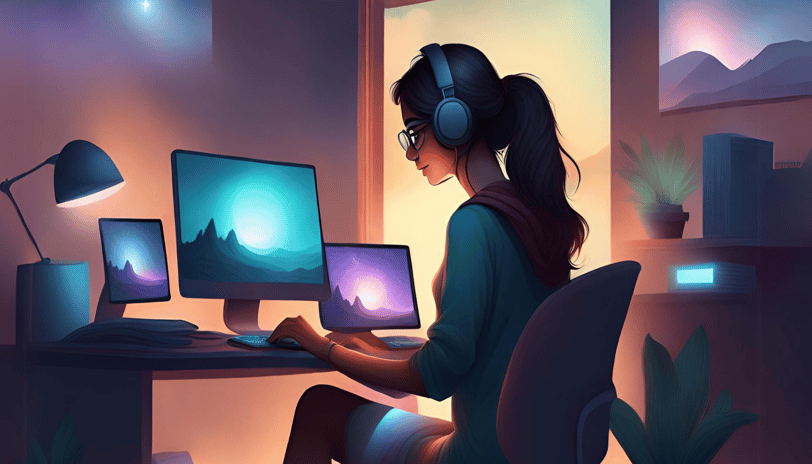Introduction
In today's fast-paced digital world, the boundaries between traditional disciplines are becoming increasingly blurred. As a graphic designer with a background in software engineering and project management, I've discovered the power of multidisciplinary skills in driving creative innovation and achieving design success. In this article, I'll delve into how the fusion of software engineering and project management expertise has elevated my graphic design journey, providing insights and strategies for fellow designers looking to master the art of multidisciplinary design.
Unleashing Creativity through Technical Proficiency
My journey into graphic design began with a foundation in software engineering—a field renowned for its precision and logic. Drawing upon my programming knowledge, I've embraced design software as a canvas for creativity, leveraging technical proficiency to bring innovative concepts to life. From intricate illustrations to visually captivating designs, my foundation in software engineering provides me with the means to explore beyond the conventional boundaries of design, seamlessly blending technology with artistic expression.
Why Graphic Design after Software Engineering?
A question I often hear on my journey as a graphic designer is, "Why did I switch to graphic design after studying software engineering?" It's a valid curiosity, considering the apparent contrast between coding and creativity. But for me, the answer lies in the beautiful fusion of these worlds.
You see, my background in software engineering wasn't just about coding; it taught me problem-solving and structured thinking. These skills set the stage for my leap into graphic design, offering a unique perspective on design challenges.
When people wonder why I made the switch, I explain it as a natural evolution—a blending of logic and imagination. Graphic design became a canvas where I could apply my technical know-how to bring ideas to life. Software engineering laid the groundwork, but graphic design allowed me to explore new dimensions of creativity.
So, while some may see it as a departure from my roots, I view it as a convergence—a coming together of my love for technology and my passion for artistry. Each project now becomes an exciting opportunity to merge the analytical with the artistic, creating something truly unique.
When faced with the question regarding my shift from software engineering to graphic designing, I smile and share my story. It's a tale of finding harmony in unexpected places and embracing the magic that happens when we dare to blend different worlds. Life isn't always about taking the most obvious path; it's about following your passions and embracing the journey. For me, that journey led me to graphic design—a world where I can blend logic with creativity and make my mark in my unique way.
Design + Project Management: A Winning Combination
My master's degree in project management has been an invaluable asset in my design career, guiding me through the intricate dance of creativity and organization. Choosing to pursue this degree wasn't just a random decision; it was a deliberate choice to equip myself with the skills needed to excel in a dynamic and fast-paced industry. With project management principles as my compass, I navigate design projects with finesse and efficiency, ensuring that every aspect—from brainstorming sessions to final deliverables—is meticulously planned and executed. The structured approach instilled by my master's program has not only streamlined my workflow but also enhanced my ability to communicate effectively with clients and stakeholders, manage resources efficiently, and mitigate risks proactively. In essence, my master's in project management has not only complimented my passion for design but has also elevated my capabilities, allowing me to thrive in an ever-evolving landscape where creativity meets strategy.
Fostering Collaboration and Innovation
One of the most transformative aspects of multidisciplinary design is its capacity to foster collaboration and innovation across diverse fields. By bridging the gap between software engineering, project management, and graphic design, I've cultivated a dynamic ecosystem where ideas flourish and boundaries dissolve. Whether collaborating with developers on web design projects or collaborating with marketers on branding initiatives, my multidisciplinary approach fosters a culture of creativity and synergy, driving forward-thinking solutions that resonate with audiences and elevate brands.
Embracing Lifelong Learning and Growth
Finally, mastering the art of multidisciplinary design is a journey of continuous learning and growth. As technologies evolve and design trends shift, I remain committed to staying at the forefront of innovation, continuously expanding my skill set and pushing the boundaries of possibility. Whether pursuing further education in emerging technologies or attending industry conferences and workshops, I embrace every opportunity for growth with enthusiasm and determination, confident in my ability to shape the future of design through multidisciplinary expertise.
Conclusion
In conclusion, the fusion of software engineering and project management skills has been instrumental in shaping my journey as a graphic designer, empowering me to push the boundaries of creativity and achieve design excellence. By embracing the art of multidisciplinary design, fellow designers can unlock a world of possibilities, leveraging diverse skill sets to drive innovation, collaboration, and success. As we embark on this transformative journey together, let us embrace the intersection of art and technology, forging new paths and shaping the future of design in the digital age.


